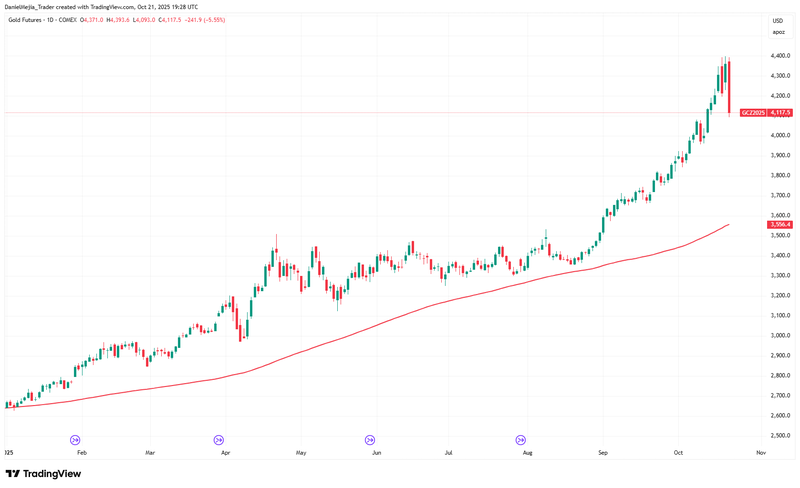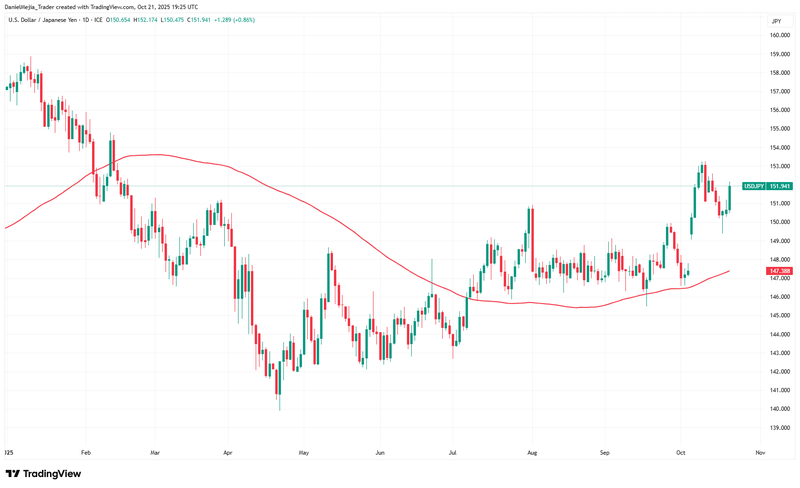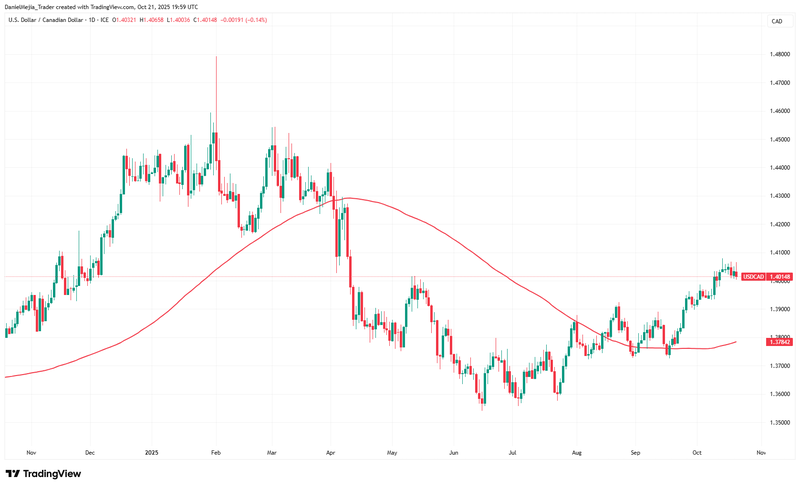Gold plunges on lower risk premium and possible profit-taking
Gold and other precious metals fell sharply amid likely profit-taking and a reduction in the risk premium as trade tensions eased. Japan’s election of Sanae Takaichi as prime minister boosted the Nikkei-225 to fresh highs while the yen weakened.

Gold and precious metals declined materially, reflecting profit-taking and a lower risk premium on eased commercial tensions.
Gold futures fell approximately 5.6 per cent to $4,112 per ounce, following an exceptional year-to-date rally.
The Nikkei-225 reached a record high after Sanae Takaichi’s election as prime minister; the yen depreciated.
Canadian headline inflation and core inflation printed at 2.4 per cent and 2.8 per cent respectively, above consensus.
Gold declines amid probable profit-taking and reduced risk premium
The COMEX gold futures contract (GCZ5) fell sharply at today’s close, declining by approximately 5.6 per cent to $4,112 per ounce — one of the largest daily drops in roughly two years. Several financial publications pointed to profit-taking after a remarkable surge in prices: gold’s year-to-date return had reached about 65 per cent, a performance that often precipitates traders locking in gains.
Additional drivers of the decline included a stronger US dollar index (which rose by roughly 0.38 per cent on the day), making dollar-priced bullion more expensive for holders of other currencies, and a reduction in the commercial risk premium following reports that discussions between the leaders of the United States and China could lead to some easing of trade frictions at their forthcoming meeting in South Korea.
Other precious metals moved lower in parallel. The silver futures contract (SIZ5) fell about 7.26 per cent to $47.77, palladium (PAZ5) declined c. 7.79 per cent to $1,431, and platinum (PLF6) lost approximately 8.27 per cent to $1,520.

Figure 1. Gold future contract (GCZ5). Source: Data from COMEX Exchange. Analysis conducted via TradingView.
Sanae Takaichi elected prime minister of Japan
Reuters reported that Sanae Takaichi, representing the Conservative faction, has become Japan’s first woman prime minister. Ms Takaichi has emphasised policies to stimulate economic growth through fiscal and monetary support. That prospect has been welcomed by equity investors but is widely regarded as exerting downward pressure on the yen.
Japan’s headline inflation currently stands at c. 2.7 per cent, above the Bank of Japan’s target, which complicates the policy mix: an expansionary fiscal stance under a pro-stimulus government could come into tension with the Bank of Japan’s price-stability objectives. There are concerns that political pressure for easier monetary policy could undermine central-bank independence.
Following the political development, the yen weakened by c. 0.81 per cent against the US dollar to approximately ¥151.88, while the Nikkei-225 advanced 0.27 per cent to a fresh record close of 49,316 points.

Figure 2. USD-JPY parity (Year-to-Date). Source: data from the Intercontinental Exchange. Analysis conducted via TradingView.
Canadian inflation accelerates above expectations
Statistics Canada reported that headline inflation rose to 2.4 per cent year-on-year, exceeding consensus forecasts of 2.3 per cent and up from the prior 1.9 per cent. Core inflation, which strips out volatile food and energy prices, increased to 2.8 per cent from 2.6 per cent.
Trading Economics notes that notable contributors to the headline increase included food prices (+3.8 per cent), household operations (+2.4 per cent) and recreation, education and reading (+1.6 per cent). Higher-than-expected inflation typically raises prospects of a more restrictive monetary stance, supporting the currency; the Canadian dollar appreciated by about 0.13 per cent versus the US dollar to near 1.4017 USD/CAD.

Figure 3. USD-CAD parity (Year-to-Date). Source: data from the Intercontinental Exchange. Analysis conducted via TradingView.
